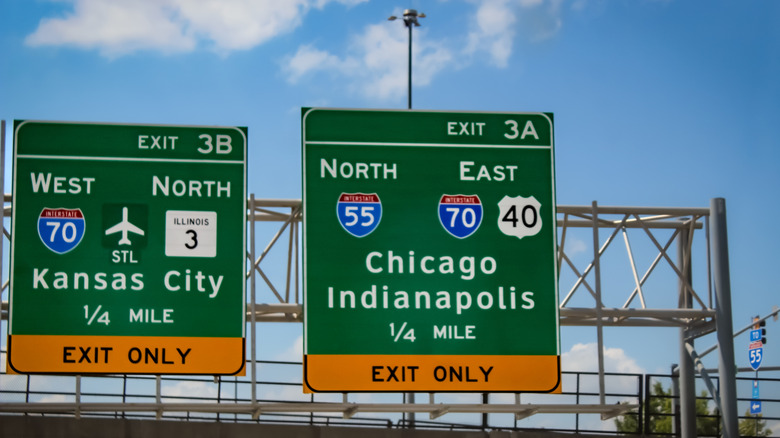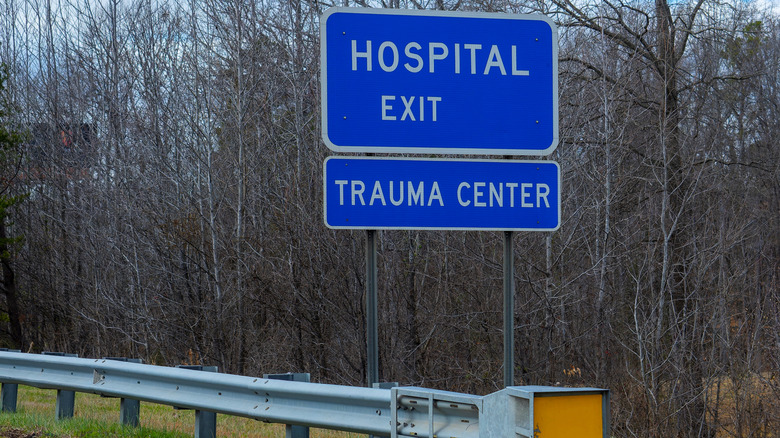Highway Distance Signs: What Colors Can They Be & What Do They Mean?
Distance signs on the highway tell you important information, including how far you are from your destination, where the next exit is, or when to expect a rest stop. These signals aren't always straightforward, which is why we've tried to explain some of the most confusing traffic signs. When trying to navigate them, one thing that is worth paying attention to is their colors. After all, the color scheme on these signs isn't some arbitrary thing: It's based on a federally designated system designed to tell you what you need to know.
There is some variation in highway signage across states, with Pennsylvania, for example, including funny messages on its electronic road signs. However, the color coding system remains consistent nationwide so that drivers can stay safe even when crossing state lines. In the U.S., green is the standard color for distance and directional signage on the highway. That means green signs can tell you where certain exits are, how far specific cities are from your current destination, or the location of well-known landmarks, like a monument or a town square. Green and white are also used for mile markers. These can be helpful not only to determine where you are in your journey, but in the case that you need to report an accident.
Brown, blue, yellow, and red also indicate specific distances
Blue signs similarly indicate certain distances, but they specifically tell you how far you are from travel amenities. These types of signs might let you know there's a rest area in 3 miles, a gas station at the next exit, or a hospital nearby. Meanwhile, brown signs will tell you how much distance to the closest tourist attractions, like museums or national parks. If you've ever gone camping in a public recreational facility, you've probably passed brown signs that tell you how far away drinking water, picnic areas, or hiking trails are.
Yellow signs are there to give you an idea of how much further you have until you reach a potential danger. These might tell you there is a curve ahead in 500 feet or that you are entering a no-passing zone for the next mile. Similarly, orange signs tell you about potential hazards ahead, though they are more specifically targeted to tell you the distance you have to travel until you reach traffic or construction zones. They'll say when you need to change lanes, adjust your speed, or take a detour. They might read, for example, "Road Work: Next 3 Miles" or "Detour: 1 Mile."
Red signs are meant to tell you how far away something even more urgent is, like a closed road 10 miles ahead or a bridge that is out of service in 500 feet. By learning what each colored sign tells you about distance, you can make smarter, better, and safer decisions on the road. If you can get these basics down, you can follow them anywhere.

